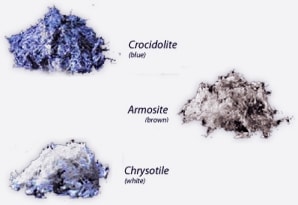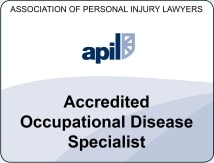Are There Hazardous Asbestos Materials in Your Home?
By Kathy Cooke. 9th March 2012
If you are living in a house built between 1950 and 1980 the answer is probably YES!
From the 1950s through to the mid 1980s there were many products used throughout the building industry in house construction and insulation that contained asbestos. It is estimated that there are approximately 750,000 buildings (including homes) that contain asbestos so if you are living in a pre-1980 property, there is a high chance that there will be an asbestos containing material somewhere in the walls, ceiling, roof and / or floors.
Pre-1980’s, asbestos containing materials were commonly used in the following:
- Pipe Lagging
- Insulation boards in some storage heaters
- Ceiling tiles
- Sprayed asbestos ceilings (‘popcorn ceilings’)
- Electrical wire insulation
- Asbestos cement products. e.g. for bath panels
- Bitumen roofing material
- Vinyl / linoleum floor tiles
- Mastics, sealants

Some of the above materials contain high amounts of asbestos e.g. the lagging used on plumbing pipes; whereas bitumen roofing material contains under 5% chrysotile asbestos which is considered to be less harmful than the crocidolite (blue) and amosite (brown) fibres.
Asbestos-containing materials are considered a health hazard when they are damaged or disturbed but undisturbed asbestos fibres usually pose no problems.
However care must be taken to prevent the release of fibres when undetaking renovation or building works as they can cause serious damage to your health.
Asbestos fibres can be inhaled and if they are not coughed up from the lungs or cleared by the normal immune response then the asbestos fibres initiate an inflammatory response, disrupting the normal cell cycle.
The symptoms of asbestos related diseases usually don’t appear until 20 to 50 years after the initial exposure to asbestos so if you think you may have been exposed to asbestos fibres in the home, it’s a good idea to let your GP know so it can be entered on your medical record.
What should you do if there is Asbestos in your home?
If you think there may be asbestos in your house – don’t panic. Provided the asbestos is left undisturbed it should be safe to leave it as is but DO NOT drill, sand, saw etc any material you suspect may contain asbestos. If you choose not to remove the asbestos from your home, you can cover it so that it does not release the fibres e.g. using paint, wallpaper or adhesive on walls; a well insulated carpet or ceramic tiles to cover up vinyl / linoleum tiles on the floor.
For peace of mind you may wish to get an asbestos survey of your house. Visit the HSE website which has useful information on how to select a competent asbestos surveyor.
There is no legal requirement to remove asbestos from the home but if you do wish to do so, it is advisable to leave it to a professional asbestos removal company. These companies have the necessary safety and protective equipment, materials and experience to remove asbestos safely. It is important that they have removal equipment with high-efficiency filters to remove any asbestos fibres from the air. If you are in any doubt about a company’s credentials to remove asbestos contact your local council for advice.
Can you remove the Asbestos yourself?
You can remove asbestos material yourself but it is a time consuming and hazardous practice. You must ensure you have the correct protective equipment, follow appropriate working practices to ensure you and others around you are safe from the potential damage caused by the inhalation of asbestos fibres.
See the guidance from the Health and Safety Executive (HSE) before deciding to undertake asbestos removal yourself. All asbestos materials must be disposed of at a licensed waste disposal site. Visit your local council website to find out where the nearest one is.
If you are concerned about asbestos in your home, visit the HSE website or contact your local council for more detailed information.

Author
Kathy Cooke MA. BSc
Cancer consultant and advisor
Kathy has worked in the cancer field for over 30 years. She was course leader for the MSc in Radiotherapy and Oncology at University of Hertfordshire. Then pre-treatment radiotherapy manager at the Cromwell Hospital in London and Partnership Quality Lead for Macmillan Cancer Support.. Read more >













